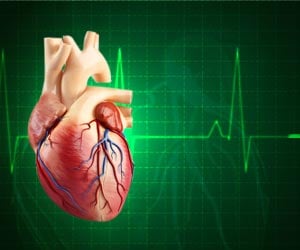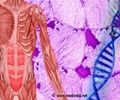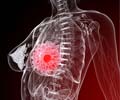- Scientists from multiple universities across the world have discovered that a mutation in the gene CDH2 is associated with arrhythmogenic right ventricle cardiomyopathy
- This condition leads to the sudden death of many young adults and athletes as there are no initial symptoms that are identified
- The study can be used to identify people at high risk for the disease
Sudden Cardiac Death
Dr. Paré said that this study would help families get over their grief and will help families come to terms with what happened to their family member. The associate professor of pathology and molecular medicine with the Michael G. DeGroote School of Medicine said that finding out that there was a genetic cause will help families understand why their loved one died so suddenly.The scientists further stated that his entire team was very happy to have contributed to the finding that a genetic mutation in the gene CDH2 was the culprit behind the death among a certain portion of the patients. Early identification of the presence of this gene variant can be used for preventative interventions as well as for genetic counseling.
According to the Heart and Stroke Foundation of Canada
- 40,000 cardiac arrests occur in Canada every year
- One in 10 people survive a cardiac arrest when it occurs out of the hospital
Cardiomyopathy
Cardiomyopathy caused due to an inherited genetic disorder under the age of 35, can lead to sudden cardiac arrest, and in turn to the death of the individual. In this inherited condition, the heart tissue is replaced by fibrous and fatty tissue. This leads to the development of cardiac arrhythmias like tachycardia and ventricular fibrillation, which can lead to the loss of consciousness and result in a cardiac arrest. Without a ready electrical defibrillation, ventricular defibrillation can cause death within a few minutes.To understand the implication of this genetic mutation, Dr. Mayosi followed a South African family who were affected by arrhythmogenic right ventricle cardiomyopathy (ARVC) for a period of 20 years. This family lost several juveniles as a result of sudden death. The scientists screened all the genes to identify the gene variations that led to the development of this condition. The identification of the gene responsible was possible when the studies were conducted on 2 ill patients in the family, narrowing down to the gene CDH2, from over 13,000 common genetic variants.
CDH2 Gene
This gene, CDH2, is associated with the production of cadherin 2 or N-Cadherin, a vital protein that is necessary for normal adhesion between the cardiac cells. When the scientists screened for mutation in the genes of another family affected with the same condition, they found a mutation in another part of the same gene, highlighting the importance of this gene in arrhythmogenic right ventricle cardiomyopathy. Earlier studies conducted on genetically modified mice showed that the absence of the protein resulted in malignant ventricular arrhythmias, which lead to sudden death.The Importance of CDH2 Gene on Heart Health
The intercalated disc in the heart that contains junctional complexes like the zonula adherens, desmosomes and gap junctions maintains the structural integrity of the heart. These complexes need to be arranged appropriately in the disc for proper electrical signal conduction and for normal mechanical functions of the cardiomyocytes. In cardiovascular disease, these components are disturbed, though it is not known if these are associated with the development of the disease. The study highlighted that the maintenance of this cell junction was associated with the plakoglobin gene which is known to lead to arrhythmogenic right ventricular cardiomyopathy among humans. Plakoglobin, belongs to the armadillo protein family and is a protein present in the desmosomal and adherens junctions. Plakoglobin is also known as catenin. In the study, a mutation was induced in the CDH2 gene in mice, and it was found that there was
- Disassembly of the intercalated disc
- Modest dilated cardiomyopathy
- Impaired cardiac function
- The mice died within 2 months
References:
- Gene Found To Cause Sudden Death In Young People - (https://www.eurekalert.org/pub_releases/2017-03/mu-gft030917.php)
















